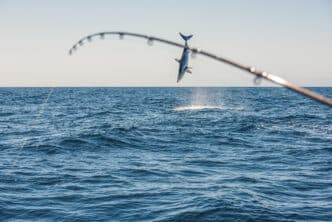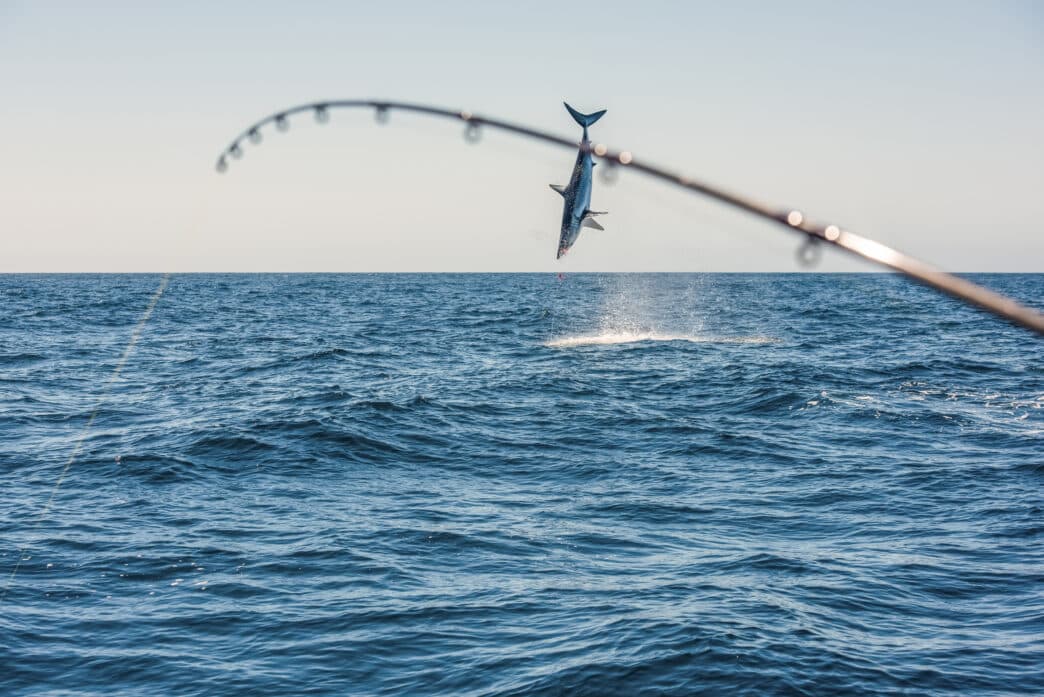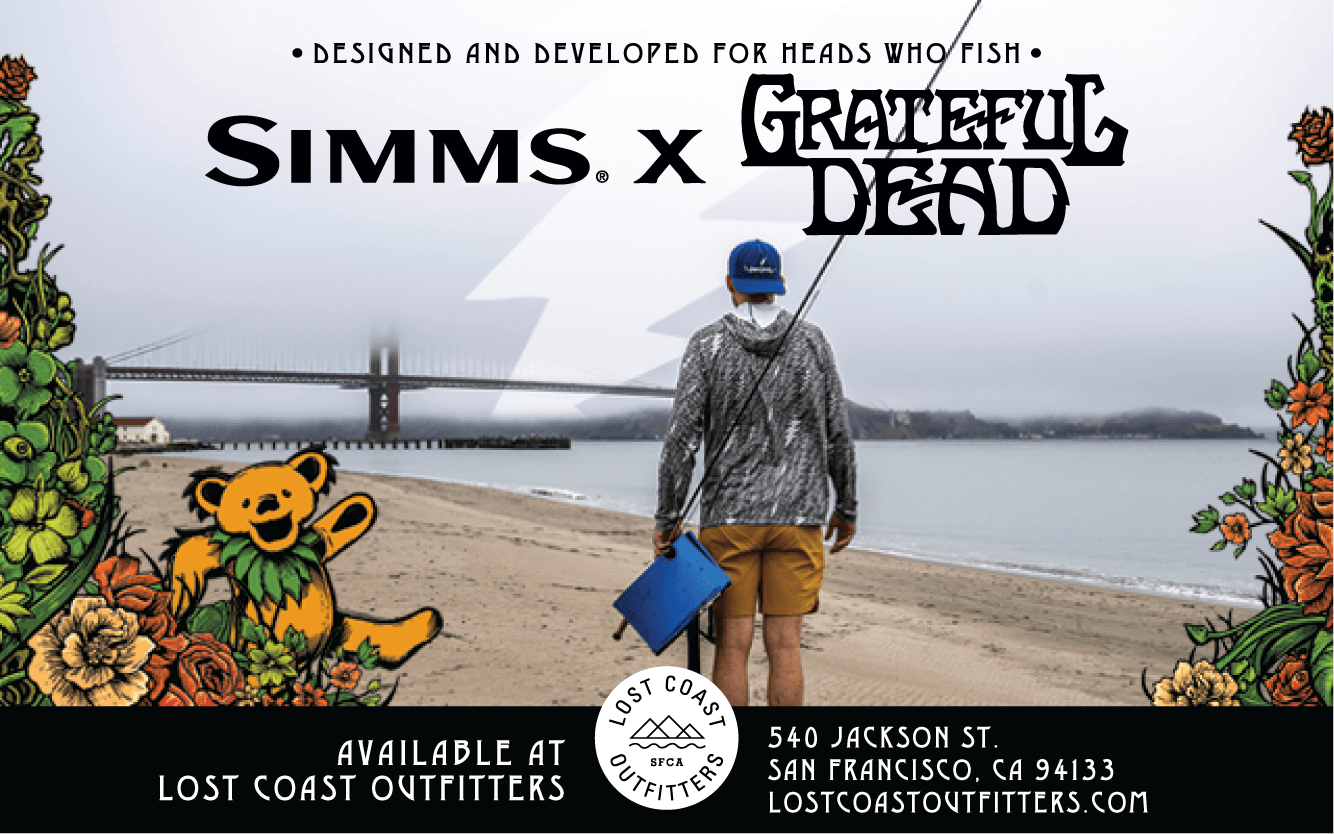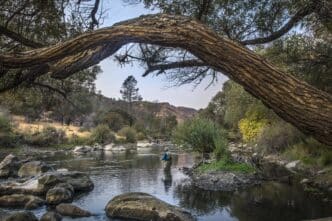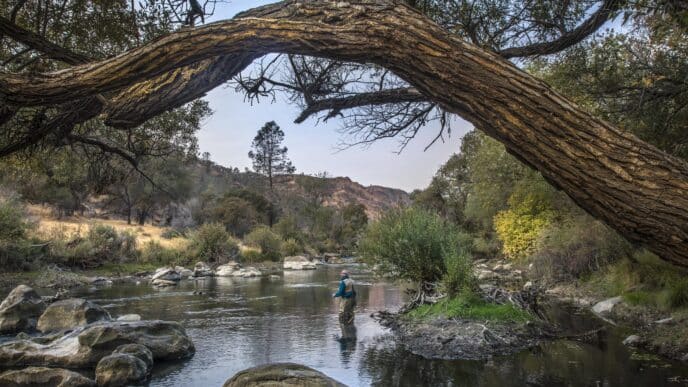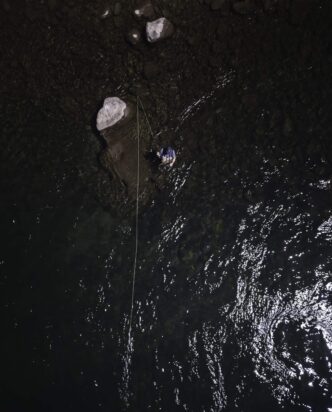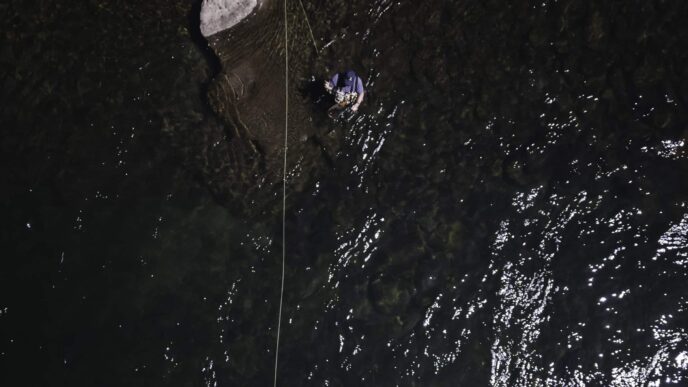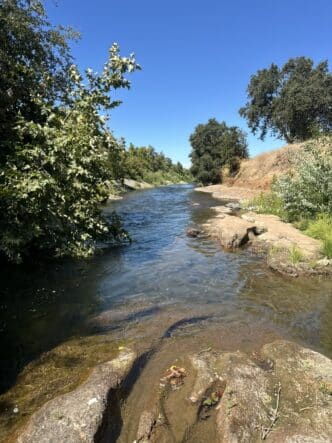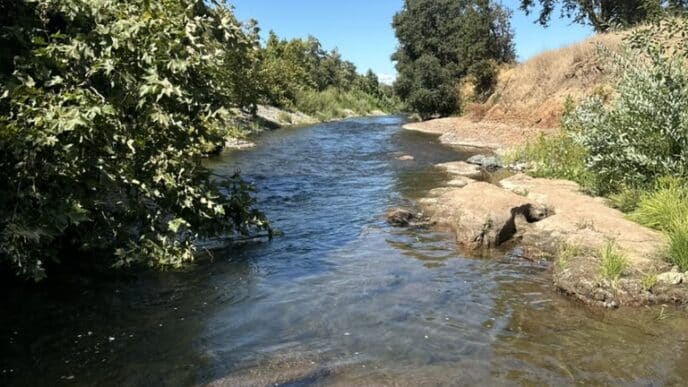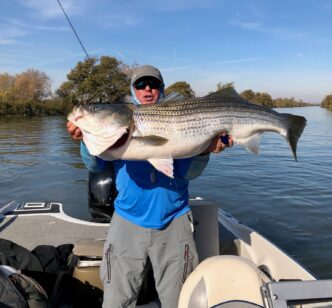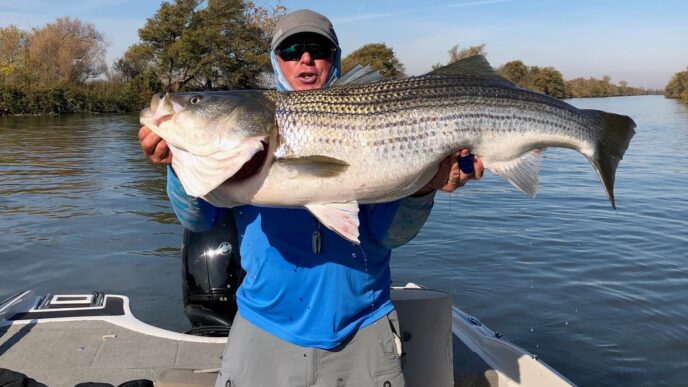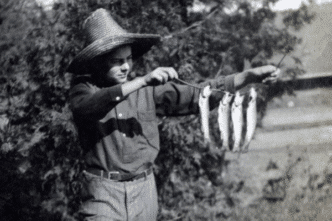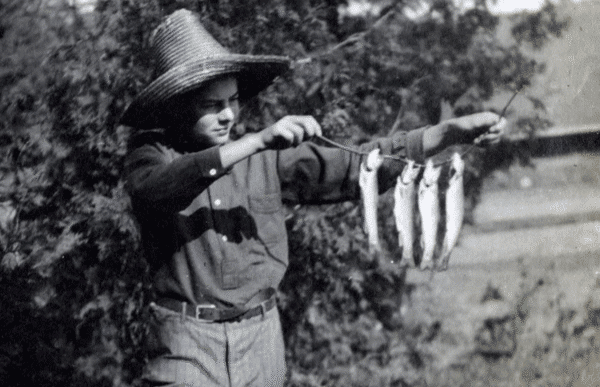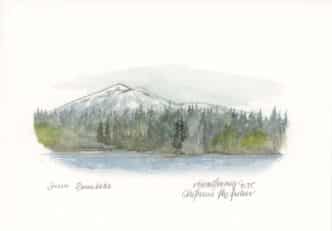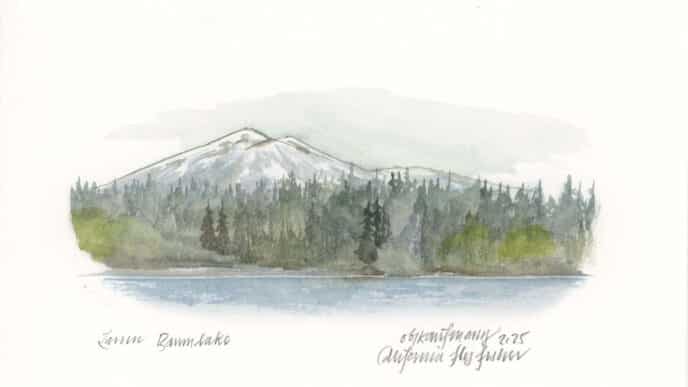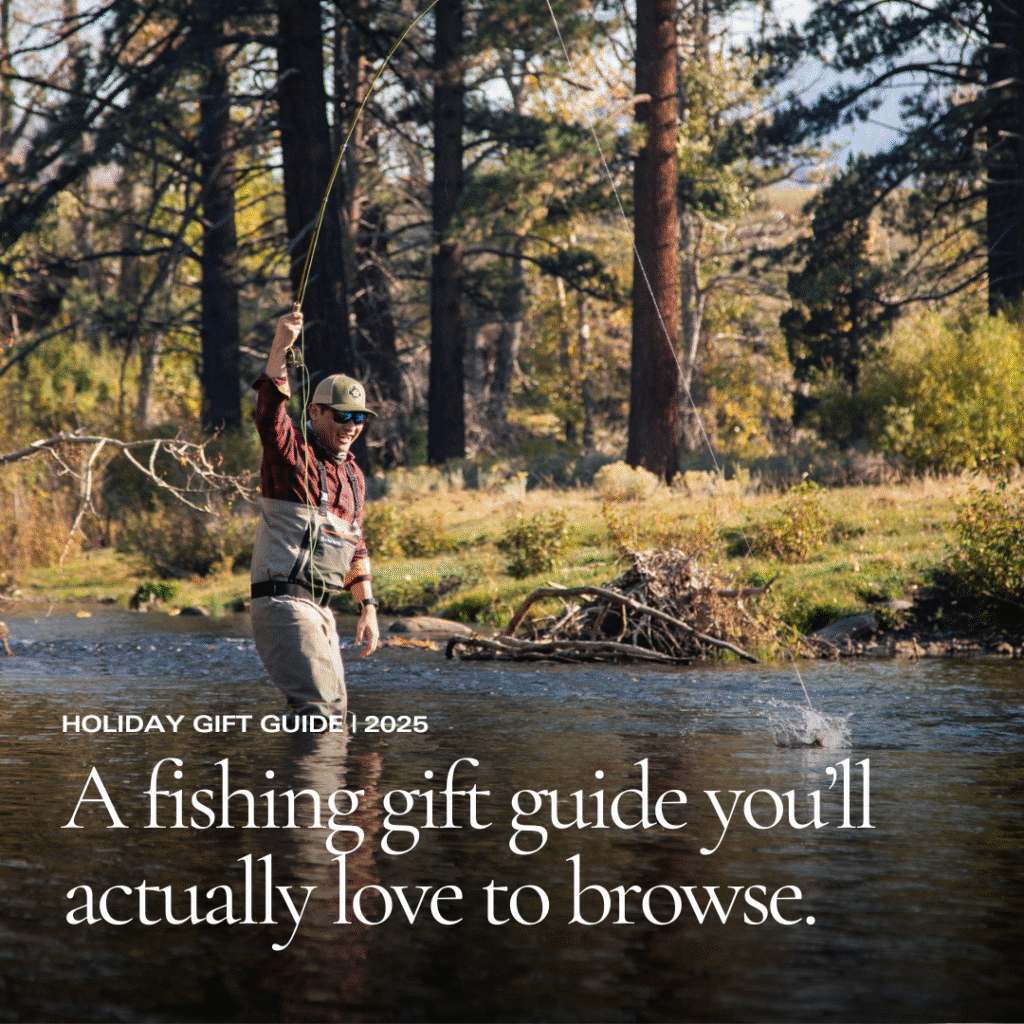Conway Bowman is a world-renowned saltwater fly fishing guide and pioneer of mako shark fly fishing. The San Diego native and co-host of “The Outfitters” has pushed the boundaries of what’s possible with a fly rod, earning recognition as an Orvis-Endorsed guide, Yeti ambassador, and Costa-endorsed captain. From his early days casting Royal Coachmen for brook trout in Idaho’s Stanley Basin to pursuing 800-pound makos off California’s coast, Conway embodies the consummate angler’s spirit. Here, his good friend and accomplished saltwater angler Al Quattrocchi—award-winning creative director, IGFA world record holder, and passionate surf guide from Los Angeles—sits down with Conway to explore his journey from backyard bass ponds to the ultimate apex predators of the Pacific.
We have been buddies for a long time. What impresses me about you is your passion for the sport of fly fishing. Whether you are throwing hoppers for carp, dry flies for trout, or half a chicken at a mako, you are always 100 percent in it; you are the consummate waterman and athlete. Your enthusiasm is infectious on and off the water. Were you always this way?
That’s an interesting question. I’ve always thrown myself into my interests. Once I get locked in on something, I don’t leave one stone unturned. For example, as a kid, I was so set on building a bass pond that one weekend I went out to my backyard with a shovel and a pick, dug a small pond that I lined with PVC lining, filled it with lily pads, put fish in it, and made the ultimate urban bass pond. My parents had that pond in their backyard for about five years. My parents let me follow my passions, which shaped my all-in approach to everything from fishing and hunting to skiing and spearfishing.
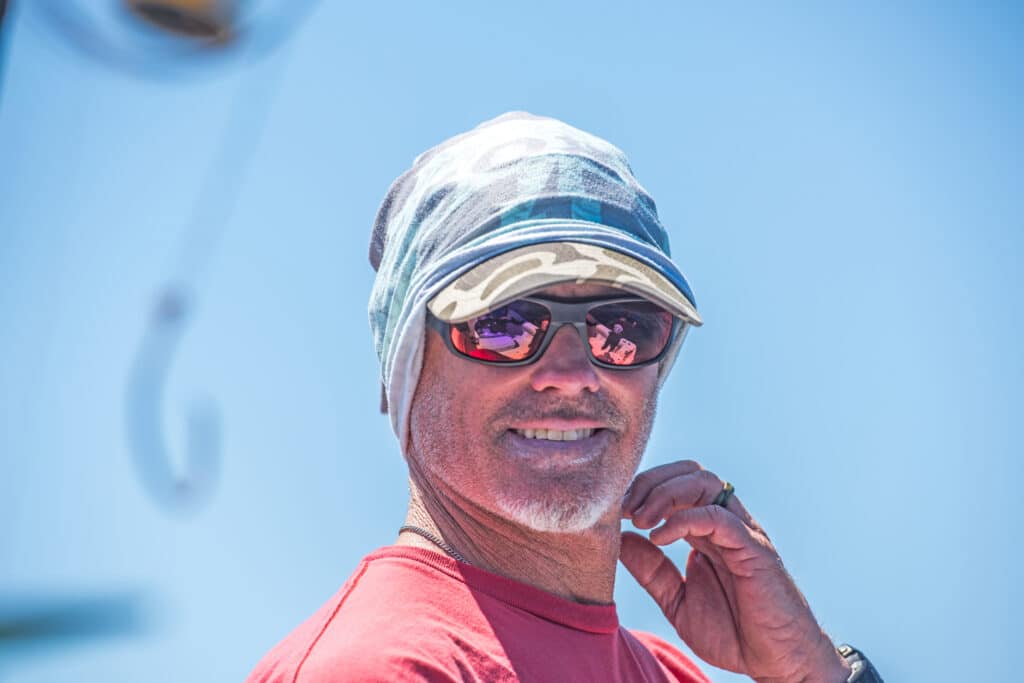
Do you remember your first fly-fishing experience as a kid and what you first caught?
My first fly fishing experience was as a child in Stanley, Idaho. My father, a schoolteacher, and I spent summers in Stanley thanks to friends who owned the Redfish Lake Lodge. At age six, I remember the first fish I caught on a fly at a place called Valley Creek. I remember my father put a Royal Coachman on an old Fenwick fiberglass Ferreira light rod. I made a very short cast along a grassy bank, and on that first cast, I caught a brook trout. That experience sparked my lifelong passion for fly fishing. For the next decade, my father and I fished all the wonderful rivers from Silver Creek and the Salmon River to Henry’s Fork and every bit of water in between. That was a very magical time in my life that shaped me into the angler I am today.
I know our buddy Nick Curcione was an early mentor and influencer in the world of fly fishing for sharks. Can you recall your first shark-on-the-fly experience?
Nick Curcione, the Godfather of saltwater fly fishing, introduced me to the activity and inspired my interest in pursuing mako sharks on a fly rod. While living in Southern California in the 70s, Nick pioneered fly fishing for makos. My first encounter with a mako on a fly rod came in the early 1990s. When I saw my first mako circling the boat, I was so in awe of this wonderful game fish. The power. The grace. The speed. Its businesslike disposition mesmerized me. I was so captivated that I didn’t even cast to it. I just watched it circle the boat. The first mako I hooked took the fly right at the rod tip, sped away at 30 miles per hour, and leapt three times. At that moment, I realized I needed to target mako sharks exclusively.
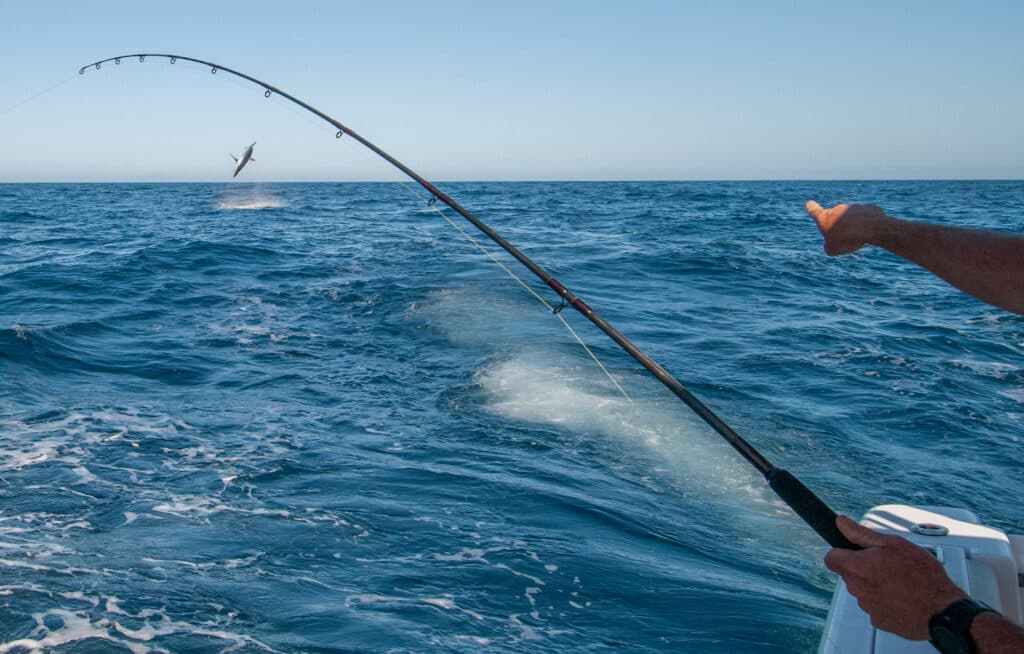
I heard you once caught a mako shark off a kayak. Walk me through that insanity.
Oh yes, the kayak mako shark shit show! I was fishing with my good friend, Kirk Deeter, and a couple of buddies back in the early 2000s. Kirk thought it would be a good idea to bring a kayak along on the trip to see if we could catch a mako shark in a kayak. When the time came, we drew straws on the boat to see who would be unfortunate enough to hop in a kayak and catch a mako shark on a fly ride while in the kayak. I drew the shortest straw.
So, I jumped in the kayak and paddled out into the chum slick that we had set earlier. Thinking I would only have to cast to a small mako, which were the only makos we had seen all day, I was confident that I could hook one from the kayak and successfully release it. Five minutes after hopping into the kayak, I see a giant dorsal fin cruising 40 feet in front of me. That was my mako! I made the cast while secretly hoping that what was beneath the dorsal fin was not going to take the fly.
Of course, the mako shark immediately turned and ate the fly and started swimming towards Hawaii. At that point, I was in deep shit. I was in a kayak. I had zero leverage on a fish that was close to 300 pounds, and I was headed off to Hawaii.
Oh, and I dropped my paddle while I was casting, and it floated away. The shark ran out with me in tow. All of a sudden, my line went slack, and I realized the shark was swimming right back at me. Right then, I saw the dorsal fin heading right for me. Now I have a 300-pound mako shark heading right back at my kayak, almost like it was hunting ME down. All I could hear was Kirk Deeter yelling, “We’re going to come get you!” in a very panicked tone. As the shark approached, I tried to break the line. I could not. With 60-pound test as a leader, I couldn’t get enough tension on the line to break it. The shark swam right up to my kayak and then sounded. My rod was fully bent over, and my kayak was starting to tip. There was no chance of my breaking this fish off. How was I going to release this shark? The fish sounded … 100 feet … 200 feet … 300 feet … and then slack. The shark broke off.
Thank God!
That’s the end of the story.
How have you evolved as an angler since those early days in pursuit of these magnificent creatures? How has your tackle evolved, such as wire leader systems, flies, reels, and drag settings?
Well, obviously, I evolved, and the equipment has evolved.
A good example is that saltwater fly-fishing reels are a much better tool these days than they were 30 years ago. Better drag. Better line capacity. As for rods, I almost exclusively use 8.5-foot, one-piece custom rods. They’re a combination of graphite and fiberglass. These rods cast large flies easily but also have the strength to fight a large mako in deeper water.
My fly selection has evolved as well. I use two flies 100 percent of the time. They are tube flies tied with foam, and they float on the surface and resemble some sort of seabird. The tube fly is great because I can use different-sized hooks depending on the size of the mako sharks I’m targeting. Also, the fight is great because it slides up the leader once the mako is hooked, and I get the fly back 95 percent of the time.
Observing mako sharks for over 30 years, I’ve developed a much higher respect for them. I appreciate it as a top predator in the ocean, a formidable game fish on the fly, and I am in awe of its strength and beauty. As an angler, it has helped me hone my skills in fighting big fish.
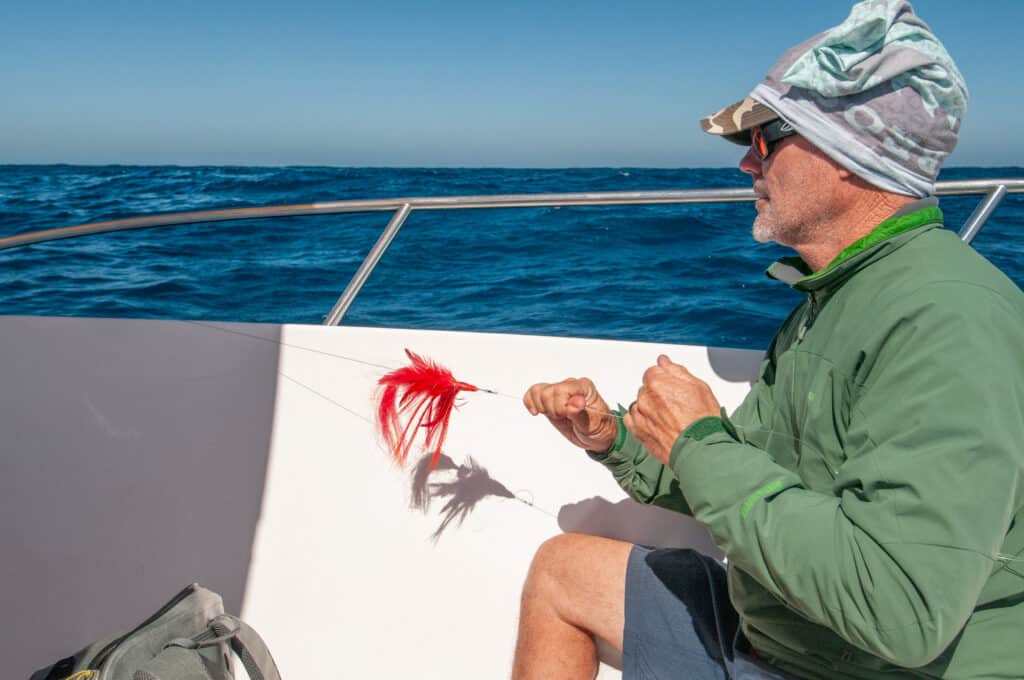
Most people may not realize the mako is the fastest fish in the ocean; they have been known to bite the tails off tuna. Explain what your reel sounds like after one eats the fly and decides to put it in overdrive?
The mako shark is, in my opinion, the fastest fish in the ocean.
It tracks and kills anything it wants, including tuna, swordfish, sailfish, and wahoo, all considered faster than a mako shark. When you hook a mako on a fly reel, it’s hard to explain the speed and power of these fish as they’re peeling off 300 to 400 yards of backing. The sound the reel makes is a high-pitched squeal.
The amazing thing is watching and hearing the fly line tear through the water. The beads of water flying off the line as it’s tearing across the surface are truly something to witness. I cannot explain how powerful mako sharks are because they are just so powerful. People just have to experience it themselves.
But I’ll tell you this, I’ve caught many great saltwater fish, and there’s not one that rivals the power and strength of the mako shark.
Conservation is so important in protecting all pelagic species. What sort of catch and release practices do you employ in your everyday charters? Are any of your fish tagged for research purposes?
I practice 100 percent catch and release for mako sharks and have never killed one, even when offered money for the record books—this is an ethical stance for me. I have never killed a shark, and I never will. While I respect others’ choices, I will always release sharks. I hope to expand tagging research on makos with my network of biologists, though funding is limited. Despite the lack of attention to mako shark research, I remain committed to this work.
How can you describe to our audience what an 800-pound mako cartwheeling 30 feet over your head does to your DNA?
There’s nothing greater in saltwater fly fishing than watching an 800-pound mako shark jump 30 feet in the air, 25 yards from you. It is by far the most majestic, powerful, and magnificent display in saltwater fly fishing. Once a mako shark jumps out of the water and you see it for the first time, you’ll never forget it. That image is imprinted in your memory forever.
Can you see either of your two boys following dad’s footsteps, pursuing the shark game when they get older?
For my two boys, Max and Jackson, all I can do is show them the beauty and strength of the mako shark and teach them to respect them. Whether they want to follow in my footsteps or not, I don’t have any control over that. However, if my passion for the mako shark inspires them to be passionate about other interests that they may have in life, then that’s all I can ask.
If my boys can be the next generation of ambassadors for our oceans, our wetlands, or our fisheries, then my wife, Michelle, and I have done our jobs. Ultimately, if they become good human beings who are caring and passionate, then that’s the ultimate compliment.
Describe your involvement with CastHope San Diego Chapter and how it’s impacted the next generation of fly anglers?
Several years ago, Ryan Johnson, the Director of Cast Hope, invited me to serve as the Regional Director for San Diego. This role has opened my eyes to the needs of kids and the importance of taking kids outdoors. The great part is, Cast Hope is not just about fly fishing. We also teach kids about the science behind fishing, and it helps them understand and appreciate the fishing environment all that much more. It also makes them better anglers. I always said fly fishing is the key that opens the door to greater opportunity for these kids. We have many kids who love the science component of our program. If we can inspire one kid to be the next ambassador for the outdoors, whether it’s through fishing or science, then the program is working.
We’re shaping kids into being the conscience of our environment through an outdoor experience. Ideally, they will take their experience and incorporate it into the rest of their lives.
If you had only ONE species to fish for the rest of your life, what would it be and why?
I’ve been so fortunate to catch a variety of fish around the world. Still, I would say, if there’s one fish and one experience that I would cherish for the rest of my life it would be … big bluegill on a fly rod and popper at a pond on a summer evening with my kids and my wife somewhere far away from the commotion of our daily lives.



